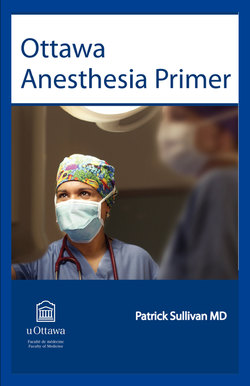Читать книгу Ottawa Anesthesia Primer - Patrick Sullivan - Страница 9
На сайте Литреса книга снята с продажи.
Chapter 2 Anesthesia Overview
ОглавлениеSarah McIsaac MB ChB, Anna Wyand MD
Learning Objectives
1 To acquire a basic understanding of the history of anesthesia.
2 To gain an appreciation of the different anesthetic modalities.
3 To understand the typical flow of patients to and from the operating room.
Key Points
1 Anesthesia requires a balance between the role of the surgeon and anesthesiologist and the wishes of the patient as well as a balance between the effects of anesthesia medications and the psychological and physiological stresses of surgery.
2 Anesthesiologists perform a wide variety of roles both inside and outside the operating room.
3 There is a wide spectrum of available anesthetic modalities for patients undergoing surgical procedures.
The word anesthesia originates from the Greek prefix “an”, which implies without, and “aesthesia”, which translates roughly into feeling. In fact, Hippocrates is believed to be the first Greek writer to use the term anesthesia in a medical context. 1 In his collection of writing, Hippocrates refers to anesthesia as a loss of consciousness and sedation from a disease – not a pharmacological process. It was not until 1846 that the physician and poet, Oliver Wendell Holmes, reintroduced the term in the medical profession with reference to the state of unconsciousness that resulted from the use of the pharmaceutical agent, ether. 2 In the pre-anesthesia era, elective surgical procedures were few and far between. The surgical procedures that were performed were often carried out as a last resort given that there was little available to control a patient’s pain during an operation, patients were either “knocked” unconscious or given large amounts of opium and alcohol to induce a stupor. In 1897, an elderly Boston physician described surgery in the preanesthetic era as “yells and screams, most horrible in my memory now, after an interval of so many years.” 3 There are countless papers describing the efforts of physicians to dull the sensation of pain during surgical procedures prior to anesthesia. The first successful public administration of inhalational anesthesia is credited to William T.G. Morton, a Boston dentist who demonstrated the use of ether during surgery in the famous amphitheater at the Massachusetts General Hospital in Boston. The scripture below the monument honoring William T.G. Morton fittingly reads, “BEFORE WHOM in all time Surgery was Agony…” This remarkable use of inhalational anesthesia propelled a rapid curiosity about “painless surgery”. Three months following William T.G. Morton’s demonstration, recognition of this technique moved north to Canada, and Canadian physicians embraced this new approach for surgical procedures. 4 In the second half of the 19th century, anesthesia was still very much a craft as practitioners worked tirelessly to understand the basic laws of inhalational anesthesia. The specialty of anesthesia emerged from these seminal procedures, and over the past two centuries, there has been a dramatic increase in both its depth and knowledge. In concert with the appreciation of anesthetic principles, there has been an equal explosion and growth in the development of surgical procedures and pain management.
Fig. 2.1 Establishing general anesthesia. LMAD = Laryngeal mask airway device.
Today, modern anesthesia has developed far beyond its rudimentary roots of ether inhalation. Contemporary anesthesia now provides analgesia and/or amnesia to facilitate a multitude of surgical procedures. Three of the most common modalities in the field of anesthesia include general anesthesia, regional anesthesia, and monitored anesthetic care. General anesthesia (GA) can be induced and maintained via a number of different techniques, including the intravenous administration of drugs as well as the administration of an inhaled mixture of anesthetic vapors. Throughout a general anesthetic, the anesthesiologist attempts to achieve both analgesia and amnesia, with or without muscle relaxation, while maintaining the patient’s normal physiological functions.
